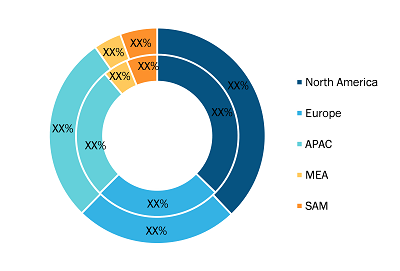The global E-House market size is expected to reach US$ 2,253.46 million by 2028, registering a CAGR of 5.7% from 2022 to 2028, according to a new research study conducted by The Insight Partners.
An electrical house (E-house) is a prefabricated mobile enclosure that contains various electrical and electronic components, including transmission devices, digital electronic systems, medium- and low-voltage switchgear, and other auxiliary equipment. It is utilized for power transmission and delivery in various end-use industries, including oil & gas, chemicals, trains, aerospace, and metal manufacturing. In both small and large-scale projects, it is frequently linked to the main loads to save the needed cable size and energy costs drastically. As E-house is such highly sophisticated machinery, any system flaws must be fixed and mitigated by qualified experts. Therefore, the e-house market growth is constrained by a shortage of skilled technicians. Additionally, since E-houses include switchgear, automated sensors, control power distribution boards, and other parts that require expensive maintenance, they can only be used in sectors with low investment potential, which hinders the expansion of the global e-house market size.
E-House Market Share – by Region, 2021

E-House Market Report| Size, Share, Growth Insights by 2031
Download Free SampleE-House Market Size and Forecast (2021 - 2031), Global and Regional Share, Trend, and Growth Opportunity Analysis Report Coverage: By Type (Fixed Substation and Mobile Substation), Component (Transformer, Bus Bar, Power Management System, Variable Frequency Drive, Switchgear, HVAC, and Others), Application (Industrial and Utilities), and Geography
Source: The Insight Partners Analysis
Impact of COVID-19 Pandemic on E-House Market Analysis
Before the outbreak of COVID-19, the e-house market experienced substantial growth due to the rising demand from oil & gas, mining, steel and metal, and heavy industries as they depended on E-house for power supply. The pandemic resulted in a worldwide health and economic crisis. Many industries were shut down, or operations were limited. For instance, in March 2021, the Netaji Subhash Chandra Bose International Airport in Kolkata halted an expansion project worth US$ 137.48 million due to the pandemic.
Restrictions imposed by governments in various countries halted the growth of the transportation industry, negatively affecting the oil & gas sector and consequently impacting E-houses sales. For instance, in April 2020, Brazil’s oil & gas regulator ANP temporarily suspended the 17th round of auction bids due to economic uncertainty in the wake of the COVID-19 pandemic. However, as industrial activities gradually returned to normalcy by the last quarter of 2020, market players witnessed steady growth in demand for E-houses. For example, in September 2020, the Netherlands government has located US$ 2,255.01 million for the maintenance and replacement of railways, roads, dams, waterways, and dykes.
ABB Ltd.; Eaton; Becker Mining System AG; Schneider Electric SE; Siemens AG; WEG; StarFlite Systems; Sécheron; Powergear Limited; and Powell Industries, Inc. are a few key players that are profiled during the e-house market analysis. Moreover, the performances of several other essential players were also analyzed to get a holistic view of the e-house market size and its ecosystem.
Organic and inorganic growth strategies adopted by these companies to expand their product portfolio and global presence are expected to support the e-house market share and growth in the coming years. For instance, in June 2022, ABB opened a US$ 6 million medium voltage switchgear factory in Vietnam. These factories are located in the northern province of Bac Ninh, 25 km from Hanoi. The manufacturing hub will produce 2,000 panels of ABB’s UniGear Medium Voltage Switchgear and 700 units of plug-and-play modular systems for power distribution per year on production lines designed and set up on the successful lean manufacturing methods used in its European facilities.
Key stakeholders in the global e-house market analysis ecosystem include component suppliers, manufacturers, system integrators, distributors, end users, and regulatory bodies. Components used in making E-houses are transformers, bus bars, power management systems, variable frequency drives, switchgear, HVACs, and others.
Few major e-house market players are ABB Ltd.; Eaton; Becker Mining System AG; Schneider Electric SE; Siemens AG; WEG; StarFlite Systems; Sécheron; Powergear Limited; Powell Industries, Inc.; and many more are helping various industries, such as infrastructure, oil & gas, mining, and others for constant power supply by using E-house. They offer the final integrated product to the end users. The machine is provided to technology/system integrators so that advanced technologies can be integrated into the product before commercializing it in the market. Regulatory bodies and government agencies are other crucial stakeholders in the e-house market, such as Indian Electrical and Electronics Manufacturers Association (IEEMA), The Transformer Association, and European Power Supplies Manufacturers’ Association (EPSMA), which are regulating the market. Regulatory bodies and associations closely regulate these organizations. End users’ industries of the market are the industrial and utilities. Increasing demand from mentioned industries is creating positive demand in e-house and thus in turn penetrating the e-house market growth.
Contact Us
Phone: +1-646-491-9876
Email Id: sales@theinsightpartners.com